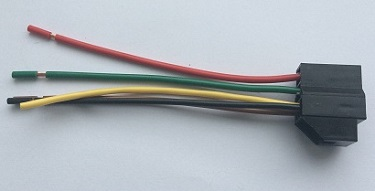Russian connectors and relays counterfeiting
Some unscrupulous entrepreneurs offer substandard counterfeit products that do not meet any technical requirement. The performance and duration of such electronic components is no more than a week, although outwardly the fake is practically no different from the original.
How to detect connectors counterfeiting and relays:
- the relay is magnetic, that is, these contacts are made of steel
- the group of contacts is made of copper and is covered with a thin layer of silver on top, respectively, the silver layer quickly wears out and when the copper is switched on again, the copper burns to each other, the relay stops working.
To avoid counterfeiting:
- check for magnetic properties. a high-quality relay in accordance with GOST does not magnetize
- external distinctive feature – contacts should be yellow, not repainted (covered with brass or bronze).
What are OEM products, why are they cheaper and is it worth buying?
The acronym OEM is often encountered by those looking for profitable PC hardware and software. Typically, products with these markings are cheaper than regular retail products.
Exactly stands for “Original Equipment Manufacturer”, which is “original equipment manufacturer”. Thus, an original product from one company can be sold by a completely different company with this mark.
There are still differences with retail products.
1. Packaging and distribution
OEM hardware and software is packaged for distribution to system builders. This justifies the fact that such products are sold in regular packaging (not typical for retail). They have no place on store shelves, it’s simple!
Indeed, it is unrealistic to find OEMs in most distribution networks. But they are actively trading on online platforms.
2. Features and Warranty
In terms of features, OEM and regular products are the same, they are considered analogs. The most commonly offered hard drives, optical drives, expansion cards; other products are presented in limited quantities. Also, the equipment does not come with the required components. There are also limitations on the guarantee: it can be reduced in terms of time or not at all (it is assumed that the seller will provide a guarantee).
Is it worth buying a Russian OEM connector?
You save money, but problems that arise during operation will have to be solved on your own. Tech-savvy people will have little difficulty. Otherwise, it is better to choose retail versions of the goods, even if they are significantly more expensive.
How much cheaper OEM products come out depends on the type of product and the manufacturer’s pricing policy. For example, OEM anti-virus solutions are typically 25-50% cheaper than retail solutions. Similar discounts can be found for other utilities.
But the main problem associated with the purchase of OEM products is not at all warranty conditions, but low availability: most developers are engaged in the sale of retail goods.
In some cases, OEM equipment is more expensive than retail equipment. This happens when the manufacturer has unrealized stocks of goods whose shelf life is coming to an end. They are then put up for sale with OEM branding at a price above the average retail price.
Marking of electromagnetic relay devices
Technical designations that carry partial information about the devices are usually indicated directly on the chassis of the electromagnetic switching device.

This designation looks like an abbreviated abbreviation and a number set. Each electromechanical switching device is traditionally labeled. On the case or on the chassis, approximately the following set of symbols and numbers is applied, indicating certain parameters.
Example of case marking for electromechanical relays:
RES32 RF4.500.335-01
This record is deciphered as follows: electromagnetic low-current relay, 32 series, corresponding to the version according to the passport RF4.500.335-01.
However, such designations are rare. Abbreviated versions without an explicit indication of GOST are more common:
RES32 335-01
Also, the date of manufacture and batch number are marked on the chassis (on the case) of the device. Detailed information can be found in the technical data sheet for the product. Each device or batch is supplied with a passport.

